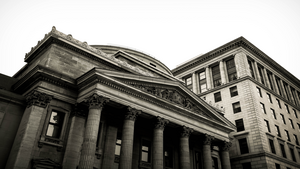S&P 500: 1.17% DOW: 0.72% NASDAQ: 2.26% 10-YR Yield: 4.15%

Last Week on WallStreet - January 20th, 2024
What Happened?
After experiencing fluctuations so far in 2024, equity markets made a decisive upward move, with the S&P 500 reaching a new all-time high for the first time since January 2022. This uptrend in the stock market is largely attributed to two interrelated factors: economic expectations and forecasts regarding the Federal Reserve's monetary policies. Recent economic data have been a source of optimism for investors, particularly focusing on the labor market. The strength and resilience in employment have not only provided a solid base for consumer spending but also influenced the overall economic sentiment positively. According to the University of Michigan survey, there is a notable optimism in consumer's outlook. Regarding the Federal Reserve, market participants have been anticipating a significant number of rate cuts throughout the year. However, there has been a slight moderation in these expectations in recent weeks. These expectations suggest that, despite the economic robustness, inflation is expected to continue its downward trajectory. This balancing act between economic strength and inflationary pressures remains a key focal point for investors as they navigate the market dynamics.
Beneath the surface, performance this week was mixed, but a red hot rally in the heavily weighted Technology (+4.5%) names was enough to drag the S&P to its all-time high. Despite this, most sectors fell for the week with Utilities (-3.1%) and Energy (-1.9%) bringing up the back.
Retail Sales Rose 0.6% in December , Topping Expectations for Holiday Season
- Retail sales increased 0.6% in December beating expectations of a 0.4% rise
- On a year-over-year basis, retail sales ended 2023 up 5.6%
- The so-called control group which excludes certain sectors rose a strong 0.8%
- Both clothing and accessory stores and online retailers saw 1.5% increases on the month
The key takeaway - The robustness of the U.S. economy persisted throughout the holiday season, with consumers actively spending their earnings. Retail sales figures, a key indicator of American consumer behavior, reinforced this trend by highlighting the ongoing economic vigor. As 2023 concluded, the economy surpassed expectations of a slowdown. A notable aspect of this trend, as evidenced in recent reports, was the remarkable 11.1% increase in sales at food and beverage establishments. As we venture into 2024, the sustainability of this consumer-led economy is a subject of debate. Labor market data presents an optimistic view, suggesting that the economy could maintain its current trajectory. However, other indicators reflecting the financial health of consumers offer a more cautious perspective. The outcome of this 'tug of war' will be born out in the upcoming months.
Consumer Sentiment Jumps to Highest Level Since July 2021
- The preliminary reading of the sentiment survey shot up to 78.8 from 69.7 in December
- A gauge that measures what consumers think about the current state of the economy rose to 83.3 from 73.3
- A measurement of expectations for the next six months advanced to 75.9 from 67.4
The key takeaway - Consumers' perceptions of their personal financial situations, the state of the economy both presently and in the future, and expectations around inflation have all shown improvement in recent months. Factors contributing to this surge in optimism among Americans include a more robust stock market, reduced fuel prices, and a deceleration in inflation. Although these indicators remain below the pre-pandemic benchmark of around 100, enhancements in these areas typically generate a positive momentum for the economy. This is because consumers who feel more confident about their current status and hold a more positive outlook for the future are more likely to engage in economic activities. This scenario can create a virtuous cycle where improved sentiment stimulates economic activity, which in turn fosters even greater sentiment.
Fed's Beige Boon Finds Signs of a Cooling Labor Market Across Most of the Country
- The Fed's survey, known as the Beige Book, is a collection of anecdotes from business contacts that provides data heading into the FOMC meeting
- The contacts spoke of larger applicant pools, lower turnover rates, more selective hiring by firms and easing wage pressures
- There were also many reports that consumers’ “price sensitivity” was forcing retailers to narrow their profit margins
The key takeaway - Data gathered nationwide for the Federal Reserve's Beige Book revealed a generally positive outlook among business leaders, despite some areas of concern. Overall, businesses appear optimistic about potential growth and rising sentiment. They observe a relaxation in the labor market, which they anticipate will lead to more moderate wage growth, a promising sign for the trajectory of inflation. Nevertheless, the pricing leverage they have enjoyed in recent years seems to be waning, as consumers appear less inclined to absorb increasing costs. This shift is compelling businesses to carefully manage their margins and renegotiate prices with suppliers. Overall, the Federal Reserve is likely to view this as a further sign that the economy is stable, providing valuable context as they formulate their monetary policy strategy for the upcoming meeting.

From Around the Watercooler
Adjusting to lower-than-expected customer demand, Ford said it was scaling back the output for its all-electric F-150 Lightning
Sports Illustrated’s future is unclear after most of the storied sports magazine’s staff was laid off yesterday
A Boeing 747 cargo plane had to make an emergency landing in Miami after flames were seen shooting out of it, adding to the list of recent mishaps
Home sales fell to their lowest since 1995 last year as high mortgage rates scared off buyers



